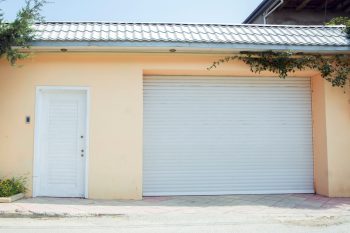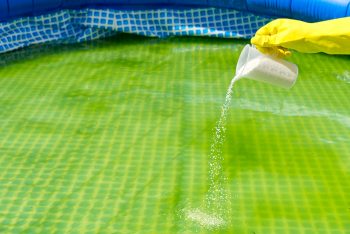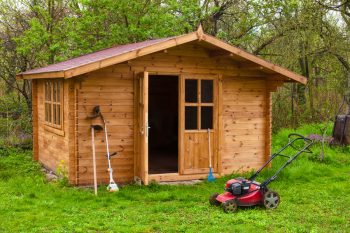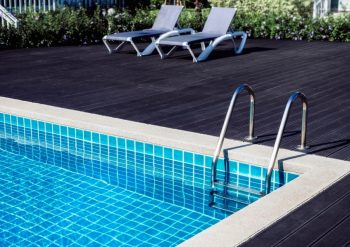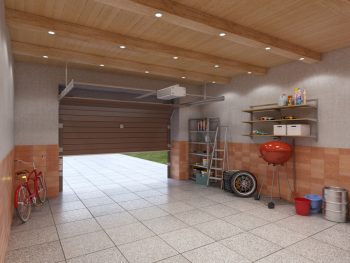
What if you could enjoy the snow this winter without worrying about your gravel driveway? How would that change your life? It would be pleasant, wouldn’t it?
Take a chill pill! We’ve got you covered.
Our detailed guidelines will show you how to de-ice or remove snow from a gravel driveway in no time flat.
Snow is like a festive treat of nature. It’s undoubtedly satisfying to hear the sound of snow crunching under your boots, the soft snow melting on your skin, and the sight of white fluffy clouds in the cold winter sunlight.
Unfortunately, this blessed weather becomes a major hassle in a flash when snow piles up and forms ice rinks.
We know! It’s a big challenge to avoid snow. But with a few simple solutions, you can eliminate that cold springtime misery before it becomes a summertime problem.
So what are you waiting for? Let’s figure out these top 10 ways to remove snow and ice from your gravel driveway.
- Use a regular shovel
- Grab a garden rake
- Use a snow blower
- Try leaf blower
- Plow
- Apply DIY solution
- Use leftover coffee grounds
- Sprinkle Salts
- Apply Ice melter
- Add Grit
This article will inform you about some handy and simple ways of removing snow from your driveway. With these tested and trusted remedies, you can clean your ice-covered gravel driveway without damaging it.
10 Ways To Remove Snow and Ice
If you love to see snow but hate to clean it up, these techniques will help you. For your assistance, we’ve shared cheap and expensive ways to eradicate this problem according to your budget.
1. Use a Regular Shovel

One of the most widely used techniques among homeowners is shoveling off snow from their gravel driveways. This choice is convenient if you don’t have a long driveway or an oversized patio with a gravel surface.
However, it’s impossible to blow away wet snow, but you can remove it in stages using an ordinary shovel. Start at the top of your area and move downwards or towards the outlet, eliminating layers if necessary.
Make sure to use a strong metal shovel while shoveling. Also, verify that it doesn’t have any rips or damaged pieces. Otherwise, a flat shovel can leave holes and cracks in your driveway.
Remember that shoveling all snow from a gravel driveway is impossible. Even with extreme caution, it will probably replenish the gravel.
Additional issues are also associated with shoveling snow, such as increased chances of heart issues, back injuries, slipping, and falling. The dangerous coating of ice that we previously stated is the final obstacle. If you fail to control it, it might turn into black ice.
2. Grab a Garden Rake

When removing snow from gravel driveways, a sturdy garden rake is more valuable than you might think.
A rake is an efficient instrument with a big head and tines spaced approximately an inch apart for breaking up hard, compacted snow.
You must know that it’s hard to guarantee that all the gravel will stay on the driveway. However, it’s vital to rake the snow carefully from the center to the sides. Try to reach the hard surface and remove as much snow as possible.
3. Use a Snow Blower
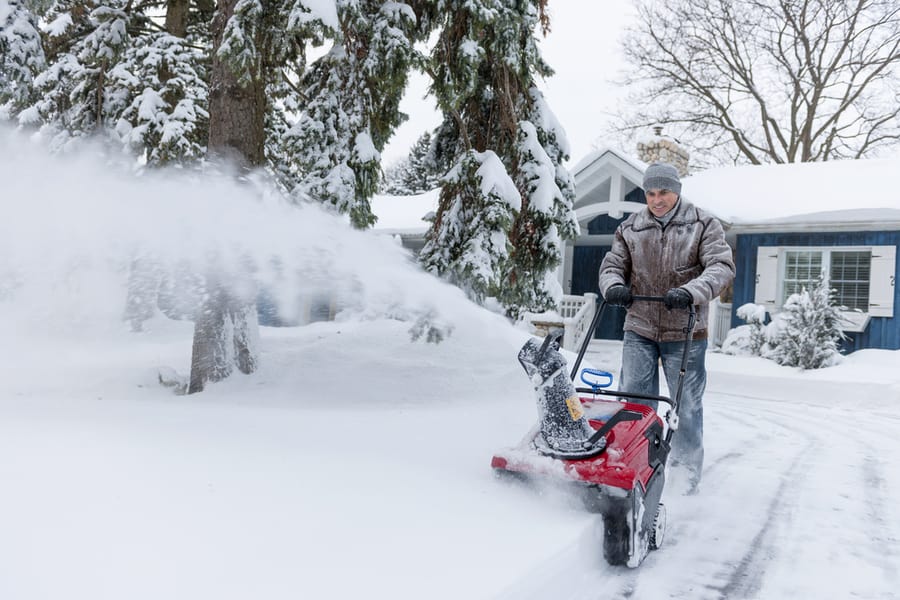
The snow blower is one of the best options to get your complicated job done swiftly and efficiently. Before you start, put on skid shoes to remove snow from a gravel drive leaving roughly an inch of snow in its place.
Doing this will save you from collecting gravel that will get tossed onto the grassy areas along your drive. You can begin with the most upwind driveway part and position the chute deflector to release snow downward.
When you face deep snow, lift the snow blower and clear the top a few inches. Then remove the remaining snow with a second pass after lowering the snow blower.
After finishing your job, make sure the auger/impeller is clean. Because the leftover snow may freeze in specific parts of the machine, preventing it from working properly and harming internal components.
Also, you have to be extra cautious while operating it. Otherwise, you will end up spreading gravel everywhere.
4. Try Leaf Blower
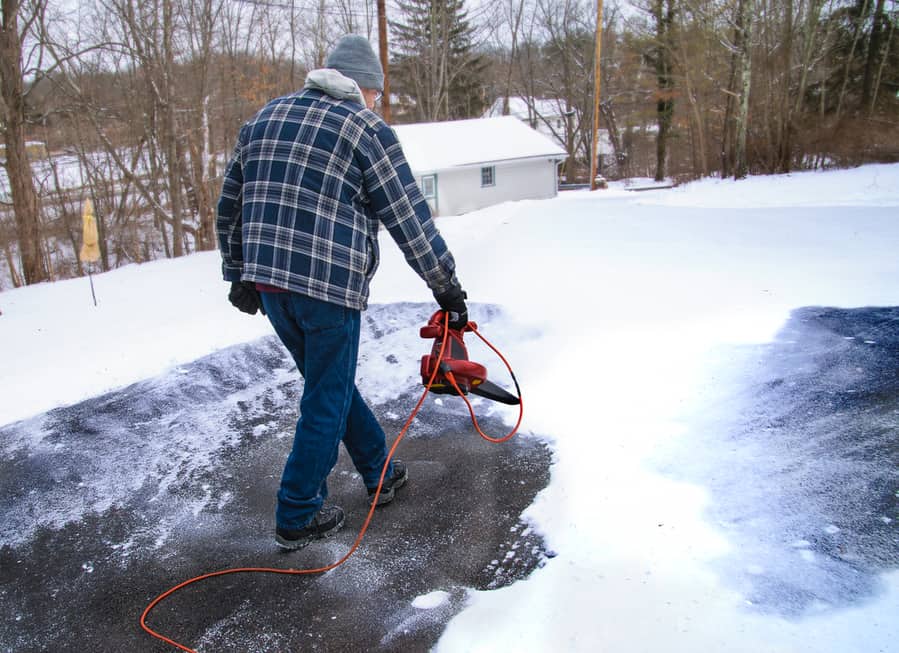
A leaf blower can easily pick up dry and light snow from your gravel driveway. You can avoid extreme backbreaking work by using leaf blowers, which are said to be surprisingly effective on freshly fallen snow.
Sadly, leaf blowers are completely useless on ice buildups.
Use the leaf blower sparingly for brief intervals. Do not expose it to weather for an extended period because it could lead to mechanical issues. When it doesn’t operate efficiently, switch it off and give it time to rest.
5. Plow
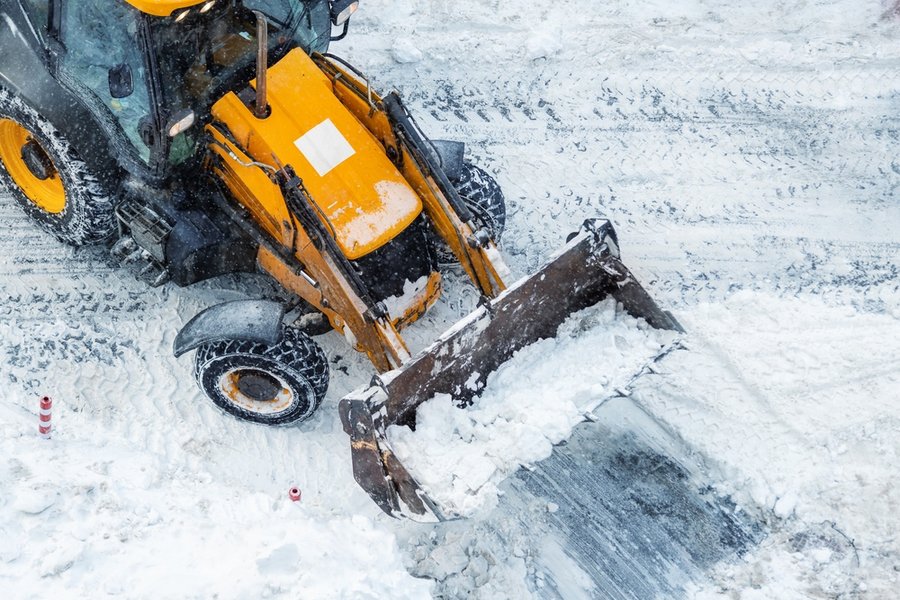
A plow removes snow by bending a blade of steel or metal in the middle. It is usually attached to the front of another machine to remove snow. Like a snow blower, you must cautiously handle a plow.
Lowering the plow blade too much can drain the entire driveway with gravel and snow. To avoid any damage, set the plow to hover between a half and an inch over the driveway.
Inspect your track to ensure the correct path. Remember that you can always plow more but can’t fix the gravel back to its place if you scoop it up by mistake.
6. Apply a DIY Solution
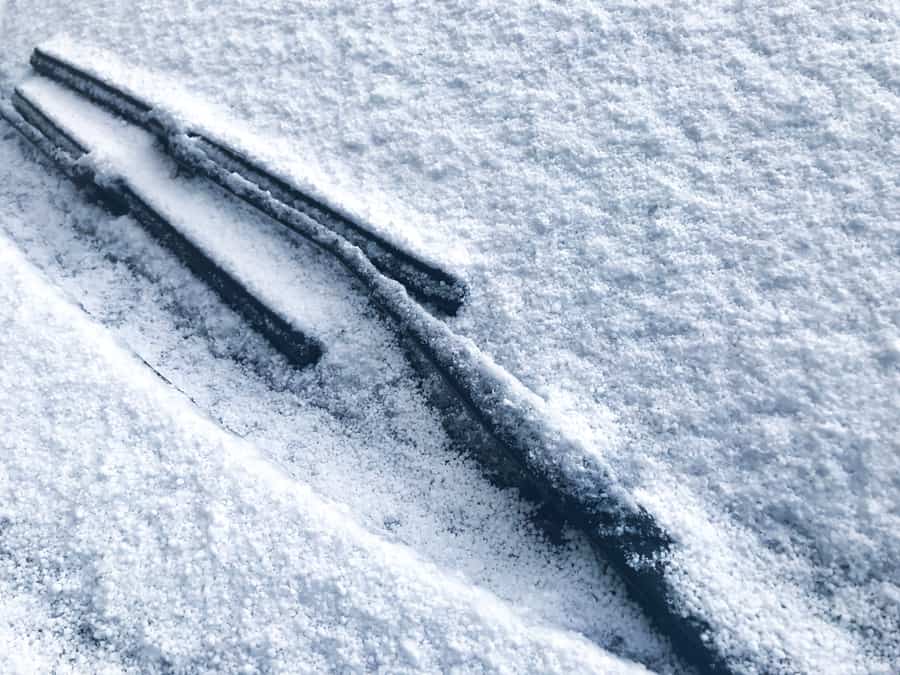
A DIY solution is a most straightforward and least expensive way to remove snow. To make it, combine two ounces of rubbing alcohol, two drops of liquid dish soap, and a half gallon of hot water in a bucket.
Due to its lower freezing point, rubbing alcohol hastens the melting of the ice while the hot water generates heat. This mixture immediately breaks up snow when you evenly pour it onto your driveway or sidewalk.
Use a small quantity of rubbing alcohol to eradicate snow. Sometimes, farmers use it on landscapes to kill pesticides. But its overdose can damage plants, so it’s crucial to use it adequately.
Moreover, the DIY solution is the most suitable option to de-ice a small area. Hence, opting for other options is wiser if you need to de-ice a vast area.
7. Use Leftover Coffee Grounds
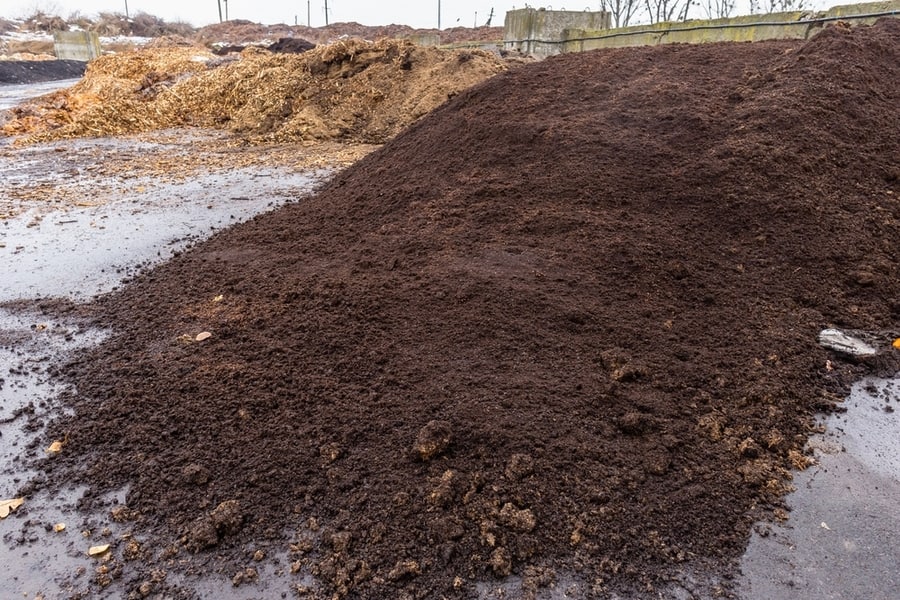
Coffee grounds contain nitrogen and acids that melt snow and are also safe for your pets. You can scatter your leftover coffee grinds before a storm or after clearing snow from your garden or driveway.
Moreover, you can also apply them on frozen surfaces to increase friction.
Wet and soggy leftover grounds can do nothing good for you. So, always pour hot coffee grounds to melt snow. The best part of this household remedy is that it is not harmful to pets or plants.
8. Sprinkle Salts

Salt is an excellent melting agent to lower the melting point of ice and snow. If you don’t have a plow, snow blower, or leaf blower, you can use rock salt to prevent snow and ice from accumulating on your gravel.
Rock salt can scorch your yard and perennial plants. Plus, it can poison your pets, e.g., cats and dogs. If you suspect your pet has consumed any de-icer, take it to the nearest animal emergency room or hospital.
9. Apply Ice Melter
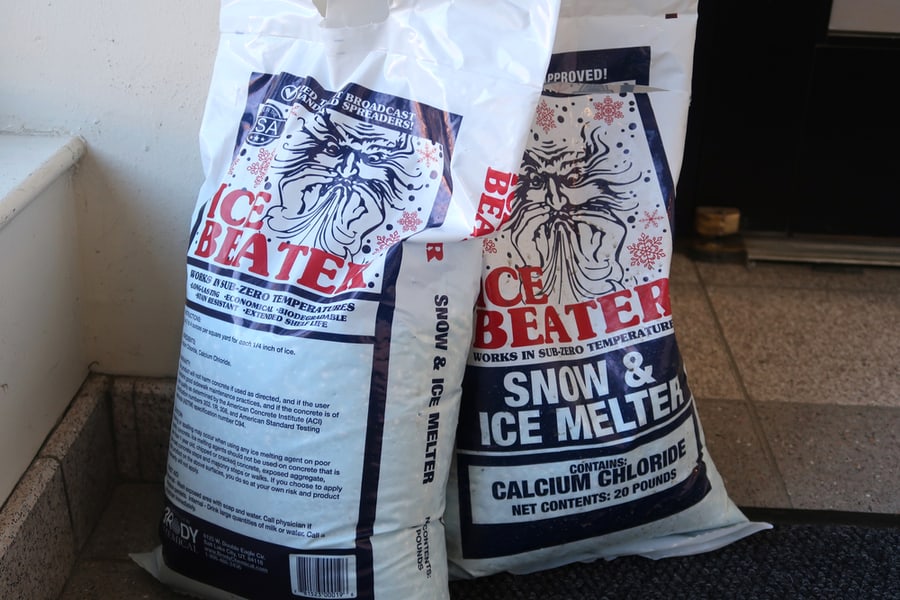
Due to the toxicity of rock salts to plants and animals, you may buy safer substitutes at your neighborhood hardware shop that are more eco-friendly.
As directed by their manufacturers, scatter them across your snow-covered driveway. They support the dissolution of the ice-concrete bond and guard against re-freezing once the ice melts.
Ice melters are corrosive, so don’t forget to wear gloves. Make sure to clean all the snow from your gravel driveway before applying any de-icer. Thoroughly rinse your gravel driveway if you suspect over-application or damage.
10. Add Grit

Adding Grit to snowy surfaces usually gives you the traction you need to move safely from one point to another unless the icy buildup is dangerous. Try spreading out sand, gravel, or birdseed to give your driveway additional traction.
Avoid using clay-based kitty litter because it will transform into watery sludge after precipitation and make the ground more slippery.
Alternate Techniques To Remove Snow
We’ve shared plenty of snow removal techniques with you so you can employ them in heavy snow. However, what if you need a different idea for better results? Fortunately, we’ve alternative options.
You can use creative snow-melting methods to prevent snow from building up between and underneath your gravel driveway cover.
1. Radiant Flooring

Radiant flooring is one of the contemporary methods of removing snow. Heated driveways or inground radiant heating melt snow when it touches a warm surface. The sole drawback of this highly effective method is its cost.
Even though the one-time installation is prudent and effective, underground heating is still expensive because it costs between $14 and $24 per square foot.
2. Snow-Melting Mats
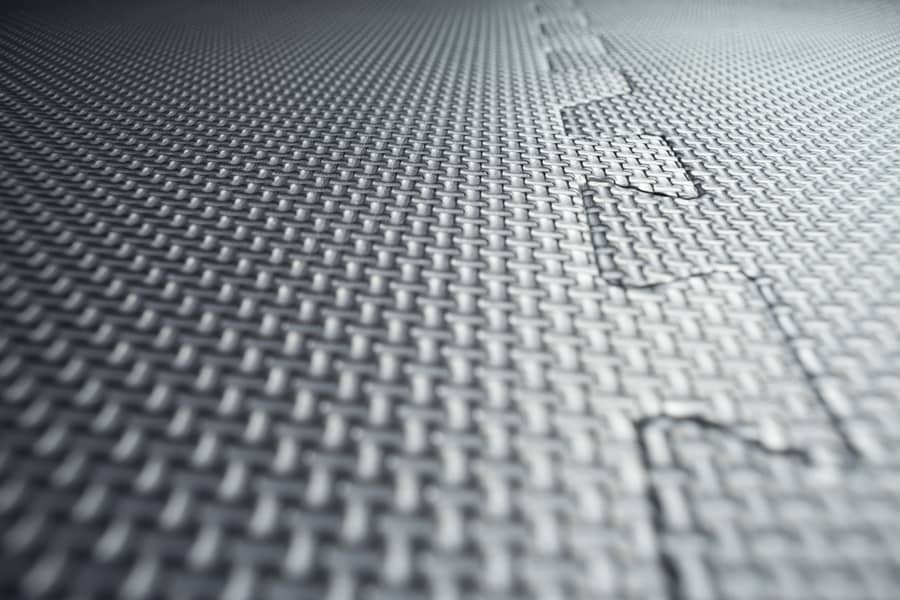
Snow-melting mats are a cheap method of removing snow before it builds up. Because of their thermoplastic construction, these mats can melt two inches of snow every hour.
So, you can directly lay these industrial mats on your gravel driveway for safe and snow-free driving. Leave the mats outside throughout the day to clear your walkways all winter.
Turn on the mats when the snow starts and turn them off once it has stopped. Alternatively, an energy-efficient thermostat or snow sensor saves electricity and effort by automatically turning on the mats.
When there isn’t snow, roll up the mats and store them for your next snowy winter.
Snowy winters can damage your gravel driveways, so follow these tips to save your skin.
- Make a pre-winter inspection.
- Use reliable ice-melting chemicals.
- Don’t remove snow and ice with a shovel containing a metal tip.
- Use snow blowers cautiously.
- Never use snow plow trucks on an interlocking driveway.
- Do not let kids use the leaf blower. Avoid operating it when perched on a ladder, rooftop, tree, or rocky surface. To access high areas, use a nozzle attachment.
- Avoid removing snow if you are fatigued, ill, taking medicine, or consuming alcohol.
Conclusion
Finally, we hope that our shared tips and tricks will help you figure out the best way of snow removal according to your situation.
So be proactive in your preparation for a cozy winter. Removing snow and ice from a gravel driveway before it’s too late can save money, stress, time, and hazards.
Frequently Asked Questions
Is It Safe To Use a Snow Blower on Gravel?
Yeah! Any snow blower is safe if it doesn’t remove snow from the surface. The contact point of every snow blower has rubber or plastic that reduces the risk of scratching, removing grass, and collision with items buried beneath the snow.
How Long Does It Take To Remove Snow From a Gravel Driveway?
There are always multiple approaches to solve, so it’s no exception to clean snow from a gravel driveway. The ideal option depends on the snow conditions you are facing, the state of your driveway, and the tools you have.
Can I Use Vinegar To Melt Ice and Snow?
Rock salt and other preceding options melt ice more quickly than vinegar, which reduces the melting point of ice due to acetic acid. However, you can use vinegar, like isopropyl alcohol; it works best when combined with hot water.
How Can I Urgently Remove Thick Ice From My Driveway?
Boiling a large pot of hot water and applying it to the piece of ice will help it melt if it is particularly thick and stubborn. Just be sure to whisk the water off the ice so it doesn’t cool and freeze on the driveway.
This method can be helpful in regions where the ice is very obstinate.




